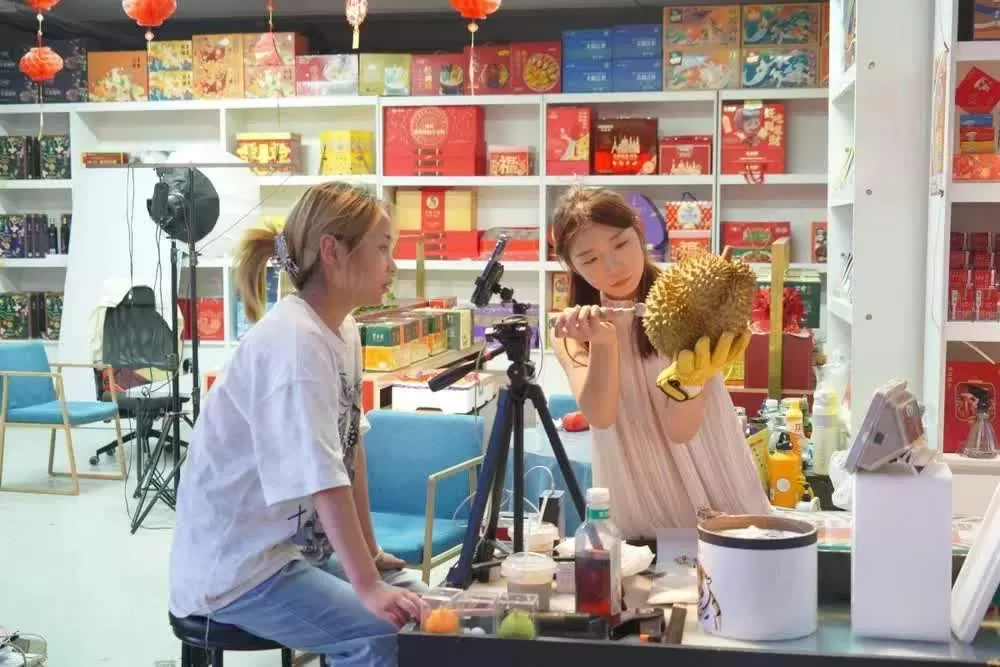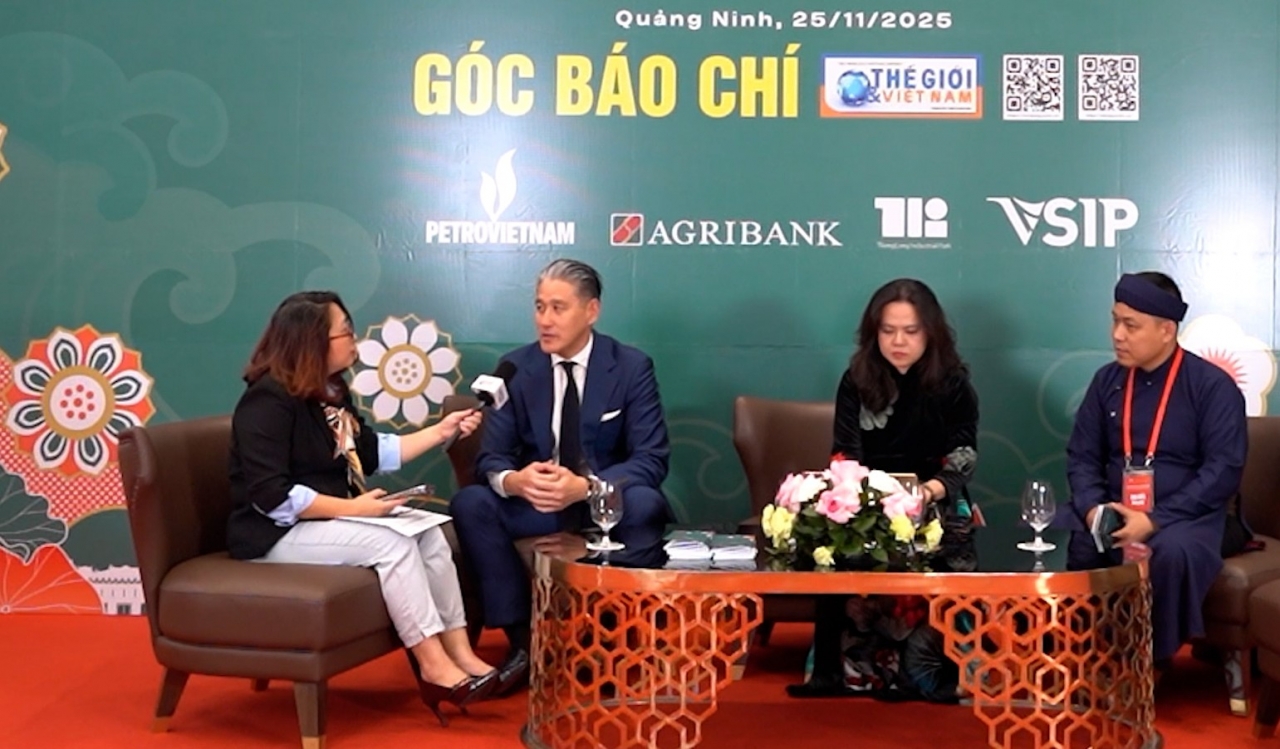
Ambassador Pham Thanh Binh: Economic diplomacy serves as an 'extended arm' to bring Vietnamese agricultural products to China
Latest
 |
| Ambassador of Vietnam to China Pham Thanh Binh. (Photo: Vietnamese Embassy in China) |
Regarding Vietnam's key agricultural products exported to the Chinese market, Ambassador Pham Thanh Binh highlights outstanding advantages of Vietnamese products at the billion-people market.
China is one of the largest markets for Vietnamese agricultural products. Up to now, Vietnam has officially exported many agricultural products to the Chinese market, including 15 fruit and vegetable products such as watermelon, mangosteen, black jelly, durian, banana, sweet potato, chili, passion fruit, dragon fruit, rambutan, mango, lychee, longan, jackfruit and fresh coconut.
In 2024, the export turnover of Vietnam's main fruit products to China all achieved remarkable results. In particular, the market share of Vietnamese fruits and vegetables increased from 3rd to 2nd place in China - after Thailand, Vietnam's fruit and vegetable export turnover to China reached 4.6 billion USD, an increase of 27.3% over the same period in 2023 and accounted for about 70% of all fruit and vegetable export markets of Vietnam.
In terms of fruit and vegetable export items, topping the list is durian with a turnover of about 3 billion USD, an increase of more than 1 billion USD compared to 2023. In second place is dragon fruit with 435 million USD, followed by banana, mango, jackfruit, coconut, watermelon...
Vietnamese fruits exported to China have initially established their own image, brand and unique flavour, which have been well received and appreciated by Chinese consumers and the market.
In addition, thanks to the advantage of being a neighbouring country with a border with China, having nearly 20 pairs of border gates for direct trade of goods, having large trading markets near the border, along with Free Trade Agreements (FTAs) such as the Regional Comprehensive Economic Partnership (RCEP) and the China-ASEAN Free Trade Agreement (ACFTA), Vietnamese fruit products that meet quality standards are all exported to China with quick customs clearance time.
Ambassador Pham Thanh Binh cited some examples illustrated Embassy's efforts to help remove obstacles to agricultural exports and promote Vietnamese products in China.
After durian, one of the main agricultural products of Vietnam, encountered some difficulties and obstacles in the export process, the Vietnamese Embassy in China closely coordinated with the Ministry of Agriculture and Environment to prepare for a working trip led by Minister of Agriculture and Environment Do Duc Duy to work with the General Administration of Customs of China.
On May 21, the General Administration of Customs of China approved an additional 960 codes for Vietnamese durian, including 829 growing area codes and 131 packing facility codes. To date, Vietnam has had 1,396 growing area codes and 188 durian packing facilities recognized by China as meeting export conditions. This is considered a positive signal for official export activities in the coming time, and at the same time an opportunity to increase the export output of this fruit in 2025.
In the coming time, the Embassy will continue to effectively implement tasks to bring Vietnamese agricultural products into the billion-people market.
Firstly, maintain communication channels and regularly exchange and share information with relevant Chinese agencies, particularly the General Administration of Customs of China to provide timely updates on regulations and new policies to Vietnamese ministries, agencies, associations, and enterprises, enabling them to promptly adapt and meet the requirements for exporting to the Chinese market.
Secondly, actively coordinate with domestic agencies to promote market access, encourage China to facilitate customs clearance for Vietnamese products, and work closely with relevant stakeholders to address challenges in the export of Vietnamese agricultural products—especially durian—to China.
Third, maintain close and effective cooperation with local authorities, organizations, economic-trade associations and enterprises of China. Through these partnerships, to promote agricultural products of Vietnam such as durian, dragon fruit, mango, lychee, rambutan, fresh coconut, to Chinese consumers via joint promotional activities.
 |
| Livestreaming durian sales in China. Photo: VNA) |
The Ambassador outlined several measures to help Vietnam leverage the RCEP to create a breakthrough in exporting Vietnamese goods to the Chinese market.
In 2025, Vietnam aims to maintain an export turnover of 454 billion USD with an average growth rate of 12%/year, of which agricultural exports are targeted to reach about 70 billion USD.
To achieve this goal, I believe Vietnam should continue to strengthen cooperation to promote the export of high-end agricultural products to the Chinese market through the following specific measures:
Firstly, continue to effectively implement the common perceptions reached by the top leaders of the two Parties and two countries on promoting balanced bilateral trade development. Leverage the advantages of the Regional Comprehensive Economic Partnership (RCEP) to expand the presence of Vietnamese fruits in the Chinese market. Enhance the effectiveness of existing agricultural cooperation mechanisms between the two sides, including the annual ministerial-level meetings between Vietnam’s Ministry of Agriculture and Rural Development and China’s General Administration of Customs.
Second, continue to implement measures to facilitate agricultural trade, maximize the effectiveness of 28 Memorandums of Understanding/Protocols on export and import of agricultural, forestry and fishery products between the two countries, and expedite the establishment of “green channels” for agricultural products. These channels should allow high-quality products that meet technical standards to be exported more conveniently to the Chinese market.
Third, improve customs clearance efficiency at border gates, auxiliary crossings, and border market pairs. Reduce bottlenecks during peak harvest seasons by increasing working hours—especially on weekends and after office hours—to ease pressure on clearance operations. Establish an early warning mechanism and share information on non-compliant shipments to enable Vietnamese authorities to take timely corrective measures. Additionally, set up permanent technical liaison points between the two sides at border gates to ensure prompt coordination in addressing arising issues.
Fourth, promote trade promotion, branding, and communication activities for Vietnamese goods in the Chinese market through diverse and flexible formats such as trade networking events, agricultural product weeks, Vietnamese goods fairs, and both online and offline promotional campaigns in major Chinese wholesale markets and on e-commerce platforms—particularly for Vietnamese fruit exports.
Notably, on June 18, the “ASEAN Fruit Festival in Guangxi” will be held in Nanning City, Guangxi Zhuang Autonomous Region. This will be a good opportunity for ASEAN enterprises in general, and Vietnamese businesses in particular, to promote and showcase Vietnam’s key fruit products to Chinese consumers.













